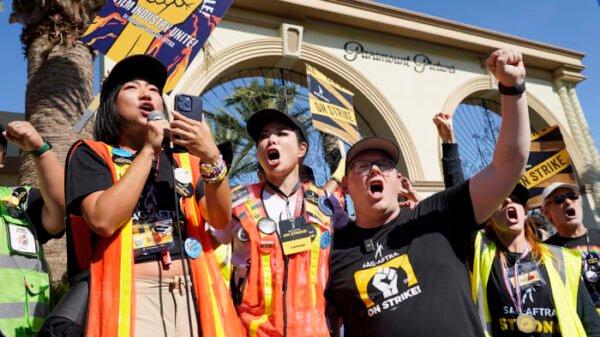How the Super Bowl 58 Grass Was Grown and Installed Inside Las Vegas’ Allegiant Stadium
The Super Bowl is one of the most anticipated sporting events of the year, attracting millions of viewers from around the world. The attention to detail in preparing the stadium for this grand event is extraordinary, and one crucial element is the playing surface. While natural grass is often preferred by players and fans alike, growing and installing it in a massive indoor stadium like Las Vegas’ Allegiant Stadium for Super Bowl 58 presents unique challenges. In this article, we will delve into the process of how the Super Bowl 58 grass was grown and installed, providing insight into the meticulous planning and execution behind the scenes.
The Selection of the Grass Type
Before the seed for the Super Bowl 58 grass was even planted, the type of grass had to be carefully selected. This decision involves considering factors such as climate, maintenance requirements, player safety, and overall performance. In the case of Allegiant Stadium, a warm-season grass variety known as Tifway 419 Bermuda grass was chosen. This grass thrives in sunny and hot conditions, making it an excellent choice for Las Vegas’ climate. It also has a strong root system and a dense turf, which enhances player traction and reduces the risk of injuries.
Preparing the Field
The process of growing and installing the Super Bowl 58 grass at Allegiant Stadium required meticulous planning and coordination between various teams. First, the existing field surface was carefully removed, ensuring that no debris or remnants were left behind. Then, the soil was analyzed and prepared to create the optimal conditions for grass growth. This involved testing and amending the soil pH, adding necessary nutrients, and ensuring proper drainage.
Growing the Grass
Once the field was adequately prepared, the next step was to sow the Tifway 419 Bermuda grass seed and initiate the germination process. This involved watering the field to maintain optimal moisture levels and applying fertilizers to promote healthy growth. The process usually takes several weeks, with constant monitoring to ensure the grass is growing uniformly and thriving.
Transplanting and Installation
After the grass reached a mature stage, it was time for transplantation. For Allegiant Stadium, the grass was grown off-site at a specialized turf farm. It was cultivated on large rolls known as sod, which allowed for easier transportation and installation. The sod was carefully rolled onto trucks and transported to the stadium on a predetermined schedule to ensure it remained fresh and viable.
Installing the Grass
Installing the Super Bowl 58 grass involved a highly coordinated effort by a team of skilled groundskeepers. The rolls of sod were carefully unrolled and placed on the prepared field surface. The individual pieces of sod were meticulously aligned, and any imperfections or seams were precisely adjusted to create a seamless and uniform playing surface. Once the sod was in place, it was firmly rooted into the underlying soil using specialized equipment.
Maintenance and Care
After the grass was installed, it required regular maintenance and care to keep it in pristine condition for Super Bowl 58. This included watering schedules, mowing at specific heights to achieve the desired playing surface characteristics, and monitoring for any potential issues such as pests or diseases. The groundskeepers at Allegiant Stadium implemented a rigorous maintenance routine to ensure the grass remained healthy, vibrant, and free from obstacles that could impact gameplay.
In conclusion, the process of growing and installing the Super Bowl 58 grass inside Las Vegas’ Allegiant Stadium was a meticulous and well-coordinated endeavor. From selecting the appropriate grass variety to maintaining and caring for the playing surface, every step was taken with precision and attention to detail. The result was a flawlessly manicured and safe playing field that provided the perfect stage for the grand event.
*Source theathletic.com




































